Welcome to the Poland Portal — Witaj w Portalu o Polsce
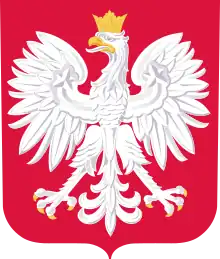
Poland is a country in Central Europe, bordered by Germany to the west; the Czech Republic and Slovakia to the south; Ukraine, Belarus and Lithuania to the east; and the Baltic Sea and Russia's Kaliningrad Oblast to the north. It is an ancient nation whose history as a state began near the middle of the 10th century. Its golden age occurred in the 16th century when it united with the Grand Duchy of Lithuania to form the Polish–Lithuanian Commonwealth. During the following century, the strengthening of the gentry and internal disorders weakened the nation. In a series of agreements in the late 18th century, Russia, Prussia and Austria partitioned Poland amongst themselves. It regained independence as the Second Polish Republic in the aftermath of World War I only to lose it again when it was occupied by Nazi Germany and the Soviet Union in World War II. The nation lost over six million citizens in the war, following which it emerged as the communist Polish People's Republic under strong Soviet influence within the Eastern Bloc. A westward border shift followed by forced population transfers after the war turned a once multiethnic country into a mostly homogeneous nation state. Labor turmoil in 1980 led to the formation of the independent trade union called Solidarity (Solidarność) that over time became a political force which by 1990 had swept parliamentary elections and the presidency. A shock therapy program during the early 1990s enabled the country to transform its economy into one of the most robust in Central Europe. With its transformation to a democratic, market-oriented country completed, Poland joined NATO in 1999 and the European Union in 2004, but has experienced a constitutional crisis and democratic backsliding under the rule of the populist Law and Justice party since 2015.
From Polish history –
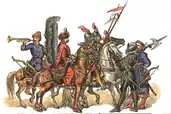
Selected image –
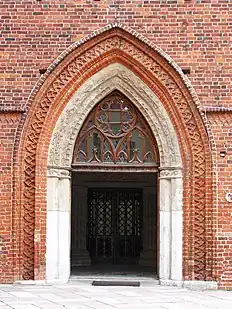
Did you know –
.jpg.webp)
- ... that Jan Matejko's painting Rejtan (fragment pictured) caused a scandal, won a gold medal in Paris, was purchased by Emperor Franz Joseph I, and looted by Nazis?
- ... that Polish jurist and activist Józef Wybicki wrote the national anthem of Poland while serving in the Polish Legions in Italy?
- ... that Anna Poray retold life-stories of thousands of rescuers including those who died in punishment for trying to save Jews during the Holocaust in Poland?
- ... that Józef Piłsudski's cult of personality succeeded in making him one of the most popular figures in Polish history?
You can help!
|
|
Selected biography –
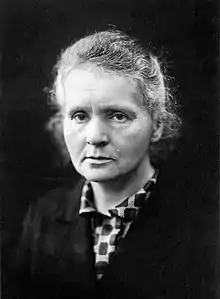
Selected location –
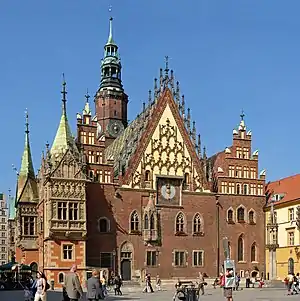
Poland now
Recent events
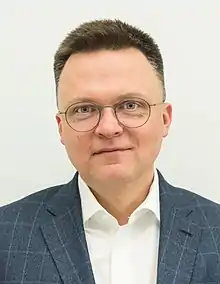
- On 13 November, former TV host Szymon Hołownia (pictured) of the Poland 2050 party was elected Marshal (speaker) of the Sejm (lower house of parliament).
- On 15 October, the ruling Law and Justice party won the parliamentary election, but failed to retain a majority in the Sejm, while a nationwide referendum on a variety of topics failed due to a widespread boycott.
- On 30 September, Grzegorz Ryś, Archbishop of Łódź, was elevated to cardinalate.
- On 16 September, Poland won the 2023 Men's European Volleyball Championship.
- On 14 September, Piotr Wawrzyk, dismissed from his post of Deputy Foreign Minister amid a cash-for-visa scandal, was hospitalized after a suicide attempt.
Ongoing
Constitutional crisis • Belarus–EU border crisis • Ukrainian refugee crisis
Holidays and observances in November 2023
(statutory public holidays in bold)

- All Saints' Day (grave lanterns pictured), 1 November
- Independence Day, 11 November
Subcategories
Topics
Related portals
| Germany | Czech Republic | Slovakia | Ukraine | Belarus | Lithuania | Russia |
| Europe | Catholicism | World War II | Communism | European Union |
Associated Wikimedia
The following Wikimedia Foundation sister projects provide more on this subject:
-
 Commons
Commons
Free media repository -
 Wikibooks
Wikibooks
Free textbooks and manuals -
 Wikidata
Wikidata
Free knowledge base -
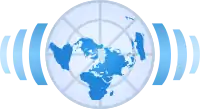 Wikinews
Wikinews
Free-content news -
 Wikiquote
Wikiquote
Collection of quotations -
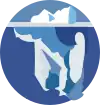 Wikisource
Wikisource
Free-content library -
 Wikiversity
Wikiversity
Free learning tools -
 Wikivoyage
Wikivoyage
Free travel guide -
 Wiktionary
Wiktionary
Dictionary and thesaurus
Wikipedias in the languages of Poland
| Kaszëbskô Wikipedijô Kashubian Wikipedia |
Polska Wikipedia Polish Wikipedia |
Ślůnsko Wikipedyjo Silesian Wikipedia |
Wymysiöeryś Wikipedyj Vilamovian Wikipedia Incubator |
Беларуская • Česky • Deutsch • Հայերեն • Lietuvių • Romani • Русский • Slovenčina • Українська • ייִדיש
-
 List of all portalsList of all portals
List of all portalsList of all portals -
 The arts portal
The arts portal -
 Biography portal
Biography portal -
 Current events portal
Current events portal -
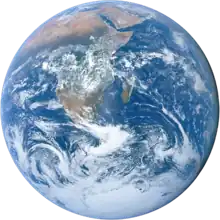 Geography portal
Geography portal -
 History portal
History portal -
 Mathematics portal
Mathematics portal -
 Science portal
Science portal -
 Society portal
Society portal -
 Technology portal
Technology portal -
 Random portalRandom portal
Random portalRandom portal -
 WikiProject PortalsWikiProject Portals
WikiProject PortalsWikiProject Portals
